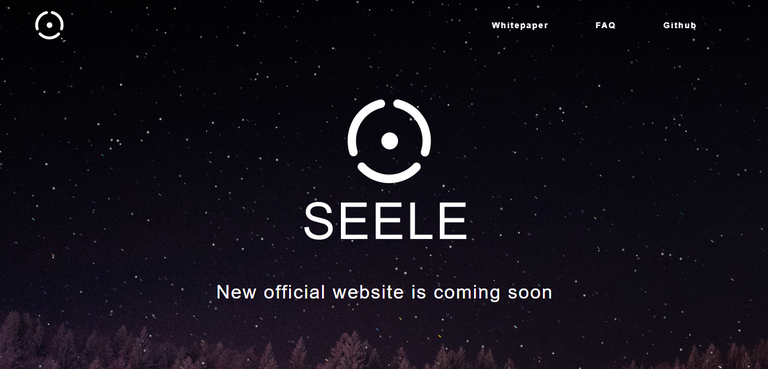
In recent times, I am very interested in projects involving Blockchain or Blockchain enhancements, especially ICO's or Blockchain's own crypto coin. After Blockchain 1.0, Blockchain 2.0 and 3.0 came out with great success and breakthroughs. ICO EOS on behalf of Blockchain 3.0 is now # 9 on the Coinmarketcap charts and has had dozens of assets for digital money investors. Following Blockchain 3.0, I will introduce you to an ICO that is the origin of the Blockchain 4.0 platform and is probably the most potential project in the first months of 2018.
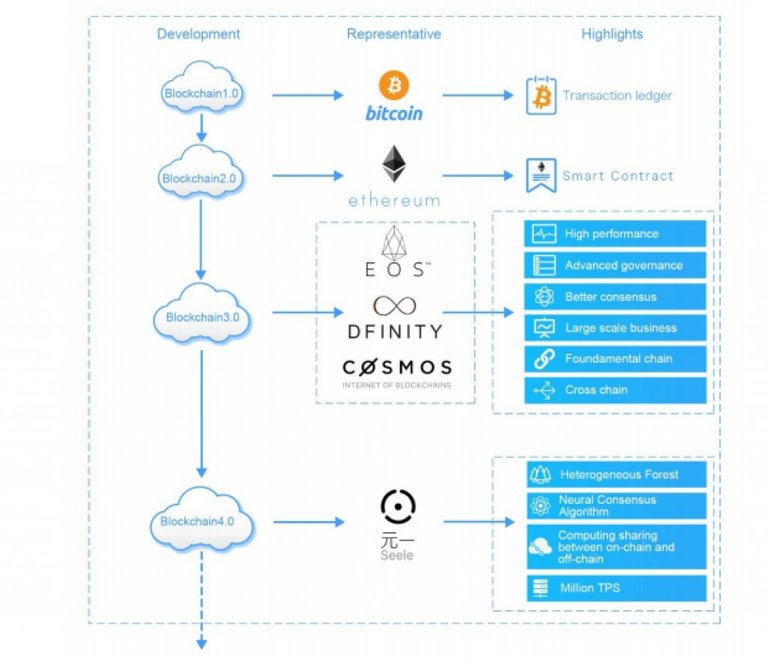
Seele is a potential competitor in the highly successful internet blockchains ecosystem, along with projects such as Icon, EOS, WanChain, and Cardano, and many others are in the pipeline. pre-ICO or personal ICO projects. These projects have the common goal of establishing a highly interactive and interlocking blockchain ecosystem based on the economic and social framework that allows current financial, legal and political systems. Applicable to blockchain. Like many competitors, Seele is a complex and ambitious project, and it is difficult to pin down the value proposition of the network that these projects offer.

What are the main problems that blockchains encounter?
At present, all blockchain architectures suffer from scalability issues similar to original blockchain technologies, such as Bitcoin. With standard consensus protocols such as PoW or PoS, there is a direct balance between throughput / transaction costs, network security and node hierarchy. Simply put, Blockchains can not extend transactional throughput without sacrificing promising security features and features.
So exactly why blockchains are not scalable?
In a blockchain, the nodes are responsible for validating transactions on the network, and ALL nodes must confirm ALL transactions to. This points to three main issues:
The newer blockchains use shorter block times to speed up network validation. This means that the latency of the nodes becomes an increasingly important factor, reducing the overall consensus among nodes as their numbers increase. It's even more difficult to protect against problems like double spending (fraudulent forms using two different transactions to spend the same balance of an account) or sudden fork outages on one Networks have low validation times and many nodes.
As the network involvement increases (in Tx / s), the nodes will be responsible for verifying the other transactions then they can connect in a rhythmic manner. This also increases the potential efficiency of network exploitation.
As the number of nodes on the network increases, the latency between these nodes will increase exponentially with the logarithm, greatly affecting its own scalability. In an ideal system, the latency is either constant or even decreasing with the addition of new nodes.
To overcome these problems, various projects have taken different approaches to handle network consensus. For example, NEO can now boast of thousands of transactions per second on its network, but the number of nodes on the network is very small, and the nodes are centrally controlled. An example of a contradictory approach is Ethereum, in this project the ASIC against PoW consensus and tens of thousands of nodes are broadcast, providing excellent security and decentralization, but instead The system can only handle 15 transactions per second. Cardano, EOS, Icon, and Wanchain all use modified PoS algorithms and it requires centralized control of the nodes to accommodate the transaction scalability that these systems require. Furthermore, although there are plans to decentralize many systems in the future, even if successful, they will have the same problem related to security and latency of the node.
What are the characteristics of the Seele?
They lead to a completely new technology platform. For someone who has a basic understanding of blockchain technology like me, it's pretty hard to understand the technology they're offering. I will list those technologies below.
- Neural Consensus Algorithm is a consensus algorithm that replaces existing algorithms (PoS, PoW, DPoS, Hashgraph and Algorand). In the whitepaper, they describe the nature of the algorithm and the advantages of this algorithm over the rest: the algorithm adopts the best of the remaining algorithms. As far as I understand, this algorithm is based on asynchronous computing, up to 50% of computers can operate outside the blockchain. It seems this is their exclusive development. Algorithms have the ability to extend linearly to the size of the node: the larger the node size, the higher the performance and the faster the speed. Thus, speed is not as important as the capacity of the node.
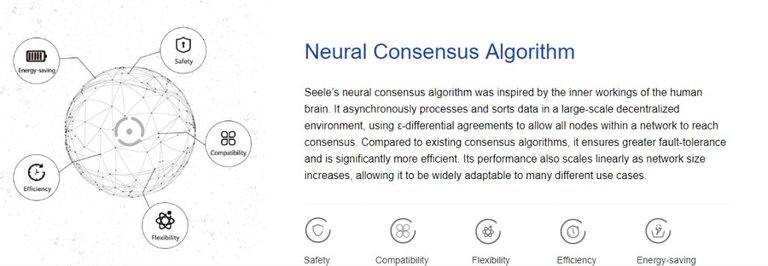
- The Heterogeneous Forest Network is comparable to existing blockchain or blockchain structures. Their blockchain and a complex multi-level structure and interconnected parts, however, each section has a separate function. This reinforces the belief that each such structure can meet the needs of the real world and can fully support multi-level business processes.
So we can see the nature and the constant change of technology:

Seele tries to solve the hypotheses of speed, scalability, and security with a new approach to network consensus called the "neural consensus algorithm." Neural consolidation enhances transaction scalability, while maintaining hierarchical nodes. In this algorithm, transaction scalability increases linearly with the number of nodes in the network, as opposed to existing networks, which often perform less efficiently as nodes grow. This feature is achieved by reducing the number of nodes needed to ensure that a transaction is valid through the consensus protocol. Further technical information on the consensus algorithm can be found on page 6 of the White Paper of the Seele project.
Let's see some of Seele's competitors to see how their consensus algorithms are different and the same.

As we can see, all existing systems that provide significant throughput are hampered by centralized control of the system nodes and vice versa. scalability of centralized networks. With Seele, Seele would increase the number of nodes on the network and allow the expansion of the linear transaction scale, allowing it to maintain the three main functions of a valuable hierarchy. Security, scalability, and speed.
There is intense competition in interactive ecosystems and the application of "blockchain networks," and the large number of separate approaches means there will be many successful projects, but the problem Networks are still competing - not just one. The major advantage of Seele is that the larger the network, the greater its scalability and security. This new approach to addressing consensus and scalability has made Seele a potentially successful project in the future.
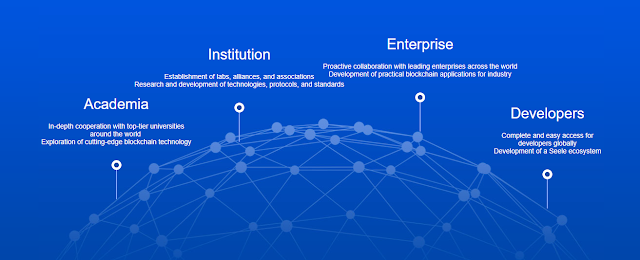
DEVELOPMENT PROJECT
The roadmap of the project is set and completed in 2018, but we must keep an eye on whether the project actually completes the roadmap.
- Q1 / 2018: Verification of feasibility.
-Q2 / 2018: Complete the test net. - Q3 / 2018: Check core functionality and optimize performance.
- Q4 / 2018: Main net release.
- Q1 / 2019: Build application support tools.

TEAM DEVELOPMENT & PARTNERS
On Seele's official website, you can easily see that Seele divides the development team into many different parts. Each department will be responsible for a different array, I appreciate this.
The Bi Wei, CEO: Author of eight patents related to Blockchain technology. The Secretary of China Blockchain Innovation. Blockchain / Big Data Development Team: Two members from Tencent, two from Baidu and two from Microsoft. 8 Scientists are teaching at universities / masters and PhD in scientific and technological research. 30 Core staff for project development, community development and maketing. 2 Market consultants: including Peter Du (investing in projects including NXT, IOTA, ELASTIC, RAIBLOCKS, BAT. 2 Technology Advisor: Prof. Donald Lawrence and Professor John Fox have had experience in both financial and technology investment. Seele's partners include many of the world's most prestigious academic institutions in the field of technology and finance.
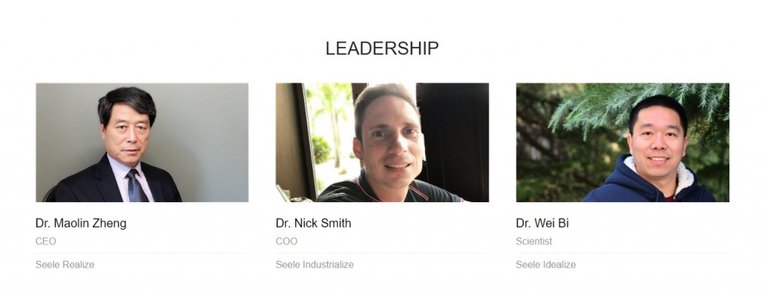
However, in these profiles, I found some unusual points. If their profile is real or just a picture taken from google, forging name and experience, this is very important in assessing leadership.
We can see top scientist on LinkedIn, here he has 84 contacts. He has a page on the University of London website. I will link below this so that you can find out (avoid copy-paste information).
https://www.city.ac.uk/people/academics/wei-bi#profile=overview
Based on a profile from the university website, he is the CTO of the Beijing Blockchain Institute and vice president of the China Association for Application and Innovation - many of its staff on LinkedIn. Since 2017, he has been the Chief Scientist of SEELE. According to his profile, he has entered the industry and developed in the field since 2016. He has acquired eight patents related to blockchain.
Digital Currency Specialists have a separate website from September 2017.
According to information on the site, he works at Blockchain Technology Center UCL. On Twitter, I have seen many photos taken in July 2017. Information about the establishment of the Blockchain China-Britain and the size of the organization is unclear. On LinkedIn, there are two profiles of two employees in the organization and their profiles are inaccessible. He is a PhD candidate in algorithmic trading and high frequency. He is a consultant for projects such as Themis, Selfsell, Invest digital.
Dean: I can not find out about him except for LinkedIn profile. Mathematics, programming, algorithms, data mining. He has worked in many major IT companies (senior development management positions).
Remarkable thing:
Two of the team members worked at Microsoft, one of them in the Peasant position (sounds pretty funny).
Team members from China have very little quality information on LinkedIn accounts. But in my experience, Asians do not generally use LinkedIn on a regular basis. Maybe they create accounts for the project only. However, this makes identity authentication very difficult.
You can clearly see the strings associated with the University of London and Peking University.
All team members are technically qualified (see details on whitepaper).
A member of the team has experience developing mobile games.
Technical Advisor:
The two problems were university professors: one was professor at Oxford, and another was professor at the University of London. I do not see information that they are related to this project.
Market Advisor:
Peeter Du - investor crypto. According to the information on the site, he received a good ROI from the IOTA project, but I could not find the information on the site. His photo on the site led me to the website https://www.acuteangle.com/, where he acted as a project investor, but with a different name (middle name is still the same). Maybe he deliberately changed his name to European.
Adma Wong, a crypto investor, founder of the venture capital fund, ChainTed.
It seems the team members, the mentors and the scientists are not the business community. Maybe the team should recruit an experienced entrepreneur.
Personal assessment. I will talk about the weakness first
Limit:
They announced a huge project and everyone would have to ask, "Is this project feasible?"
Missing link information on the site. It looks like they are new to the public project around the 20th of January.
A large part of the team, technical and market advisers have almost only the name and the picture because I did not find any information at all. But who is this person? They insist that their projects surpass all existing projects, demonstrating that they inherit all the best from today's technologies, and even better. I think we should not assume that our innovations are better than the actual product.
Red flags: linkedln of the team is not detailed, whitelist on google drive, admin pretends to fool investors on the Telegram.
Advantages:
If this project is technically feasible and complete, this will be one of the biggest projects I've ever known- because it's not just a basic blockchain, but everything is based on blockchain: the Internet. , business, data, information, economics.
The team consists of several members, including professors, DScs, patents, vast experience, top universities in the world.
Even if you are not a technical expert, they can also explain the limitations of blockchain and offer solutions.
I still pay attention to this project, if you need more information, please follow the link below.
- Official Email Address: contact@seele.pro/ kyc@seele.pro
- Official Website: https://seele.pro
- Official Announcement Channel: https://t.me/SeeleAnn
- Official Telegram Group: https://t.me/seeletech
- Official Telegram Asia: https://t.me/SeeleCN
- Official Twitter: https://twitter.com/SeeleTech
- Official Facebook Page: https://www.facebook.com/seeletech
===================================================================Official GitHub: https://github.com/seeleteam
Success comes from ideas, starting with enthusiastic people and flying high by the whole community
Author by: Hoangvuhk3110
Bitcointalk Profile: https://bitcointalk.org/index.php?action=profile;u=1805177